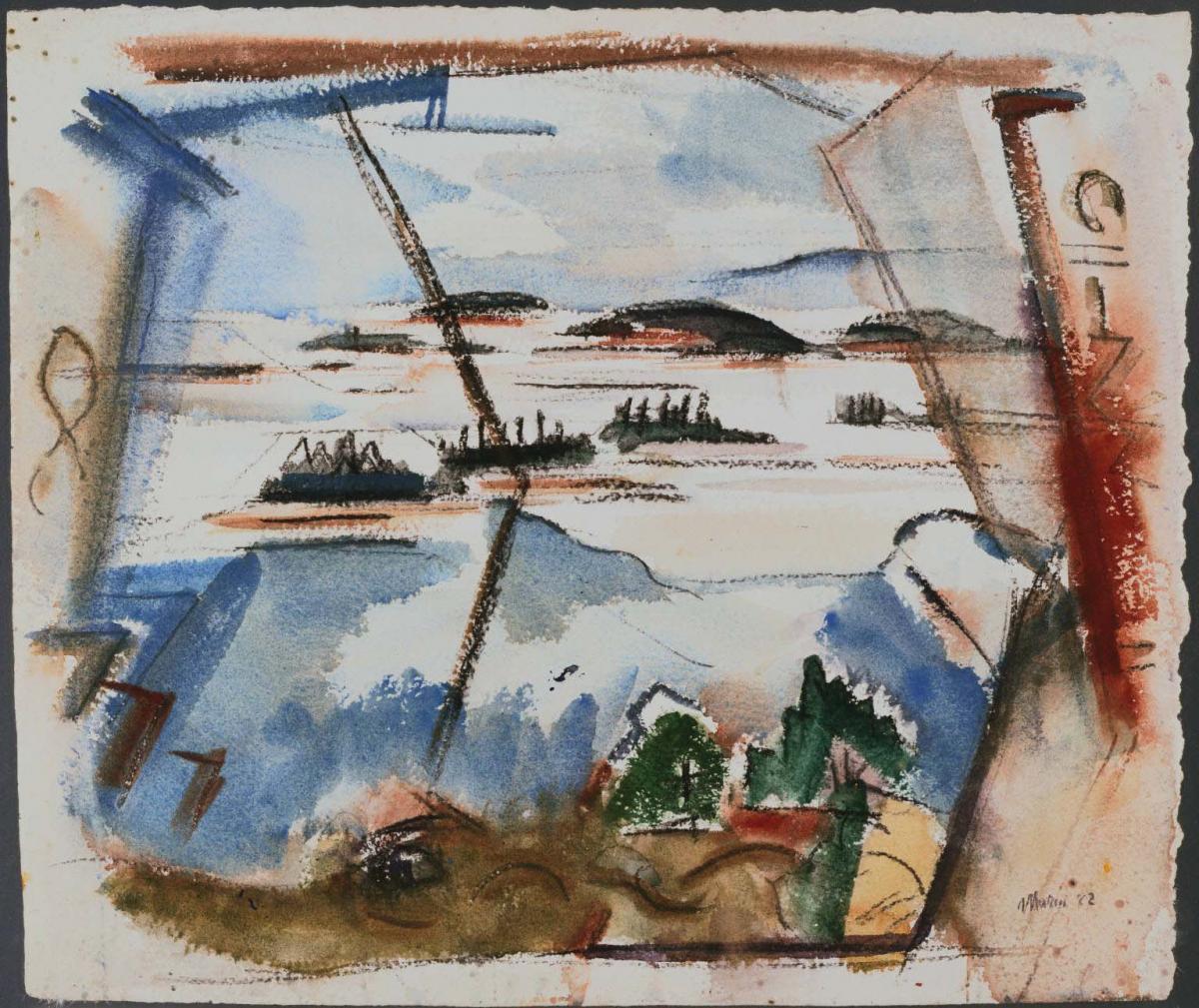Maine Islands
John Marin ( 1922 )

Although derived from nature, Maine Islands does not illustrate an actual site but instead emphasizes the expressive potential of color and form. Maine Islands was painted from a hilltop in Stonington Harbor, Maine, a locale John Marin began to frequent in 1920. He depicted a tranquil landscape of distant islands within a border of strong, fragmented diagonal lines. One of his more famous works, it was one of the first to use the “internal frame,“ where the central image is seen through elements painted by the artist at the composition’s edges. This was a structural device derived from cubism. But the frame was not rigidly conceived, as Marin allowed bits of the scene to spill beyond the framing. The impression of looking through a window is implied, but the diagonal lines also suggest the idea of breaking through an imagined barrier. The lines also serve the purpose of leading the viewer’s eye into the distance.
Duncan Phillips believed that this watercolor was an outstanding example of Marin’s style, and he considered it one of the cornerstones of his Marin unit. He particularly admired the movement in Maine Islands, stating in the Phillips Collections 1927 Bulletin: “Speed. We advance upon distance and the oncoming rush of distance meets and greets us. Aware of the impetuous flight of our senses in space the clouds almost open to let us pass through…!”